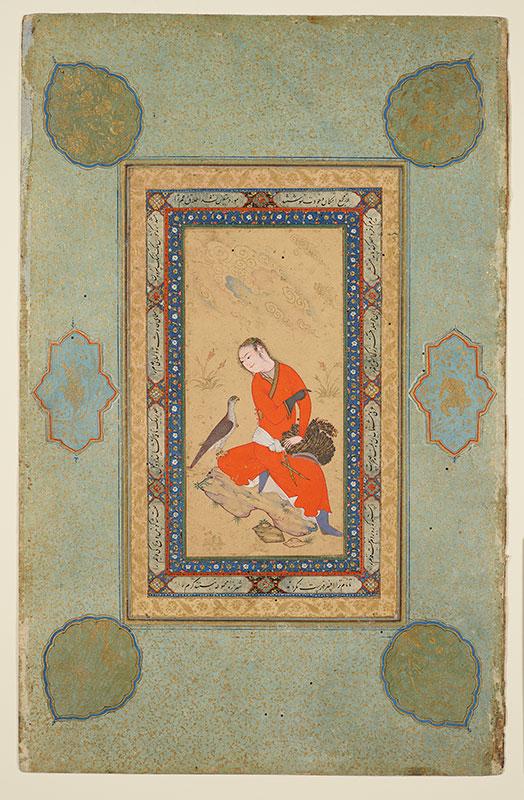
Accession number:
MS M.386
Title:
Read Album of Persian Miniatures
Created:
ca. 1600.
Credit:
Purchased by J. Pierpont Morgan (1837-1913) in 1911.
Description:
1 single leaf : paper on card, ill. ; 378 x 241 mm
Provenance:
Ḥusain Khān Shāmlū (d. 1618) and possibly his son, Ḥasan Khān; purchased by J. Pierpont Morgan (1837-1913) from Charles Hercules Read in 1911; J.P. Morgan (1867-1943).
Notes:
Ms. illuminated in Herāt, Afghanistan, ca. 1600.
The surround contains cuttings from a manuscript qasida by ʻUrfī in "-am rā".
Artist: possibly by Ḥabīb-Allāh al-Mashhadī (fl. 1595-1610).
Miniature measures 163 x 78 mm.
Language:
Surround in Persian
Resources:
Catalog Link:
Department:

In 1911 Pierpont Morgan purchased two albums -- one Persian, the other Mughal -- from Sir Charles Hercules Read, a collector-curator who was then Keeper of British and Medieval Antiquities at the British Museum in London. The acquisition of these two albums proved to be an important turning point in the history of the Morgan Islamic collection. Belle da Costa Greene, Morgan's librarian at the time, accompanied by art historian and collector Bernard Berenson, first saw paintings from the albums at the great exhibition of Islamic art in Munich the previous year. The huge exhibition "Meisterwerken muhammedanischer Kunst" (Masterpieces of Muhammedan Art) consisted of hundreds of objects in all media lent by scores of institutional and private owners. Quite taken by the images from Read's collection, Greene wrote to him that they were among the finest works included in the Munich show. Deciding that these important schools of painting should be represented in her employer's collection, Greene asked Read, should he be willing to part with the albums, to give Morgan the right of first refusal. The assemblage of the Read Persian album was begun by Husain Khan Shamlu, governor of Herat, Afghanistan (r. 1598-1618), and possibly continued by his son and successor, Hasan Shamlu (d. 1646). The album's twenty-seven sheets, many of whose paintings were made in Herat itself, were originally bound in accordion style; today the sheets are preserved individually. The Persian album includes paintings of noble youths attending their falcons (a popular subject during the late sixteenth century), young men flexing bows (one of the exercises practiced by Persian athletes at the time), foppishly dressed young dandies, lovers, and numerous examples of fine calligraphy.